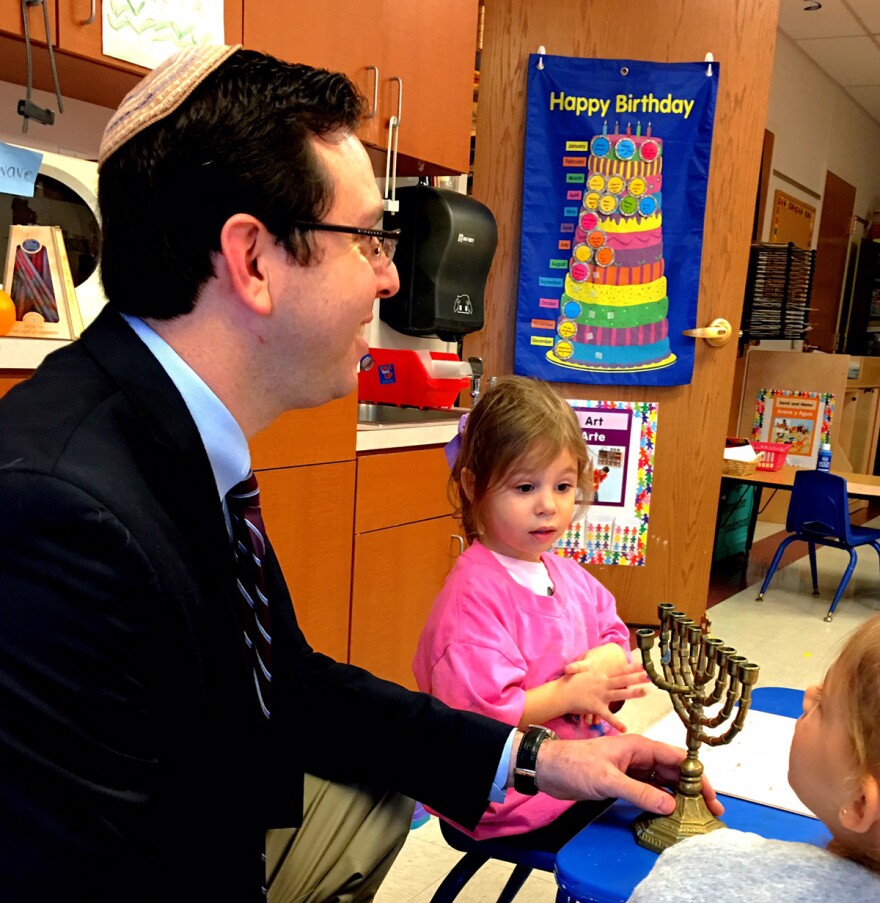Each night as Jews around the world observe Hanukkah, the eight-day Festival of Lights, the age-old song Maoz Tsur—"Rock of Ages" in Hebrew—is sung after the lighting of the candles on the menorah.
Check out our Swingin' and Singin' Hanukkah Playlist on Spotify!
Just before Hanukkah last year, Rabbi David Gerber of Congregation Beth Or in Maple Glen, PA gave Meridee Duddleston some insight into the history and meaning of the hymn.
The 19th-century American rabbis Marcus Jastrow and Gustav Gottheil wrote the popular English version of “Rock of Ages,” based on the German of Leopold Stein. This year, Hanukkah begins after nightfall on December 12th and concludes on December 19th.
Radio script:
MD: If there’s one song associated with Hanukkah, it’s this one.
[MUSIC: “Maoz Tsur” ("Rock of Ages"), Kol Yisrael Choir]
The title is “Rock of Ages,” and in Hebrew, “Maoz Tsur.” And really, on this family-centered holiday, it’s more likely to be sung intimately, simply, and at home, by families gathered ’round after lighting the menorah, like this.
[MUSIC: Rabbi Gerber sings "Maoz Tsur"]
If there's one song associated with Hanukkah, it's this one.
MD: For some, the song evokes memories of childhood menorahs. For others, like Rabbi David Gerber of Congregation Beth Or in Montgomery County, Pennsylvania, those images have deepened.
DG: “Maoz Tsur” was originally written around the 1300s. It was very long. It has been shortened and translated into the version that we know, “Rock of Ages,” by a man named Marcus Jastrow, and that’s where the phrase “rock of ages” comes from. “Maoz Tsur” doesn’t exactly translates into "Rock of Ages.” It really translates into “rock of strength.”
MD: The tune is thought to be borrowed from a German folk song or hymn. And the well-known interpretation of the ancient Hebrew poem about victory over religious oppression came in the late 1800s by way of a collaboration including the Philadelphia-based Jastrow, a prominent rabbi and scholar.
DG: When you’re hearing it today, almost every time you’re going to hear it, it’s going to be that Jastrow translation.
MD: A musical message of praise and triumph sung around the world on a holiday where candles burn bright.
[MUSIC: "Rock of Ages," New London Children’s Choir]

